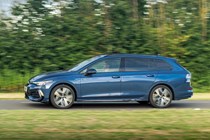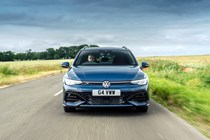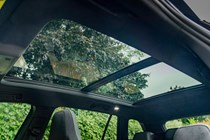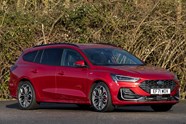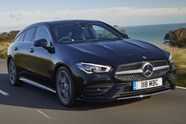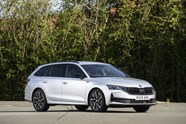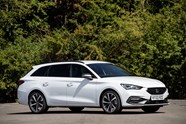
Volkswagen Golf Estate review

At a glance
| Price new | £29,415 - £38,795 |
|---|---|
| Used prices | £12,282 - £28,804 |
| Road tax cost | £195 |
| Insurance group | 14 - 28 |
Get an insurance quote with

|
|
| Fuel economy | 37.7 - 65.7 mpg |
| Miles per pound | 5.5 - 8.4 |
| Number of doors | 5 |
| View full specs for a specific version | |
Available fuel types
Petrol
Diesel
Pros & cons
- Refined and comfortable
- Great fuel economy from both petrol and diesel engines
- Large boot
- Not as roomy as an Octavia Estate
- No plug-in hybrid option
- Can get expensive with optional extras
Volkswagen Golf Estate rivals
Overview
When Volkswagen sells so many SUVs it’s easy to forget it also makes some of the best estate cars. The Passat, which is now only available as an estate, is its most obvious car of this type but you shouldn’t discount the more affordable Golf Estate.
It’s a more compact tourer that makes for a better car for British roads, but is one that’s often overlooked. While the Volkswagen Golf remains one of the UK’s most popular new cars, just 5% of them sold in the UK are an estate car.
It’s all the more confusing as it’s a very good car, offering plenty of space, refinement and comfort, albeit at a more expensive price than an equivalent Seat Leon Estate or Skoda Octavia Estate, both based on the same underpinnings. We also recommend the Peugeot 308 SW and Toyota Corolla Touring Sports as further alternatives – you can read more about how we come to our conclusions on our how we test cars at Parkers page.
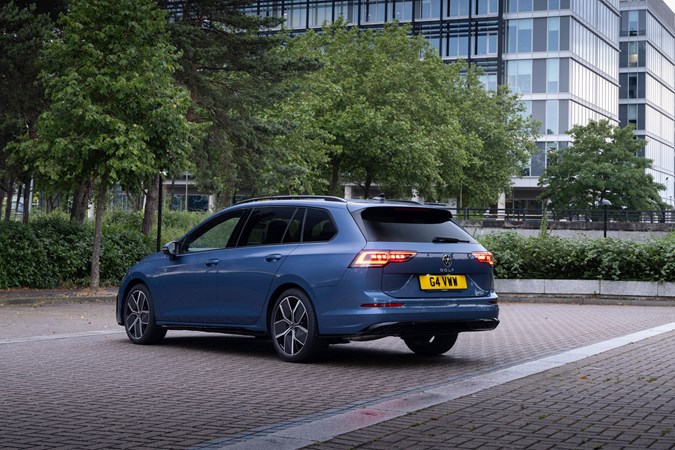
The eighth-generation Golf Estate arrived on sale in 2020, and was facelifted in 2024 alongside the rest of the Golf line-up. One of the most significant changes is a new infotainment system, bringing a larger, easy-to-use screen, addressing the real weakness of the initial Golf Mk8. The styling was also smartened with a redesigned front and rear end, as well as new LED lighting – with light-up Volkswagen badges available for the first time.
But other than those changes, it’s business as usual with this latest Golf Estate, with a good choice of petrol and diesel engines – as well as a sporty Golf R Estate version – remaining available. Scroll down to find out what we think of it.
What’s it like inside?
The interior is the biggest change as part of this latest update, and is a welcome improvement. The main difference is Volkswagen’s new infotainment system, which has now been rolled out across many of VW’s models. Now on a 12.9-inch screen (up from 10.0), it’s a much clearer system that’s easy to use, with new shortcut buttons and a faster response time. Not everyone will get on with the fact that even climate control functions are nestled within the screen, however.
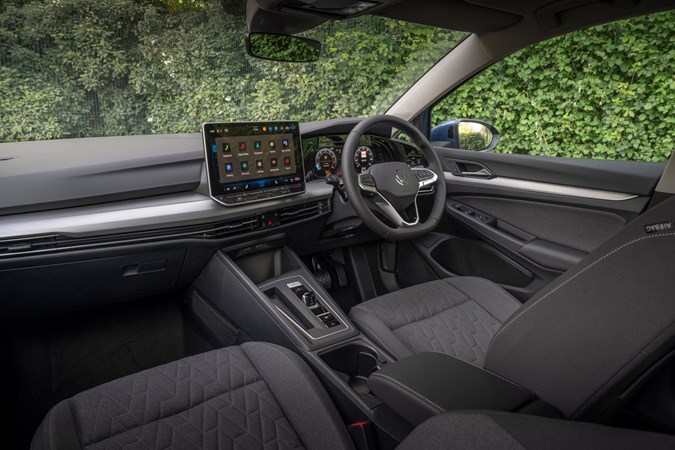
The quality has also improved as part of this update, with more soft-touch materials being used than before. The interior of the R-Line trim is especially smart with its part suede upholstery and sports seats with integrated headrests, though comfort is a high point regardless of which Golf version you choose. Another welcome change is Volkswagen putting physical buttons back on the steering wheel as opposed to the touch-sensitive pads on the pre-facelift, which were a pain to use.
Space and practicality
The key reason you’d choose the Golf Estate over the hatchback is for the additional space that comes from its longer wheelbase and larger boot. By compact(ish) estate car standards, it’s impressive, too. The 611-litre boot is a great size and larger than plenty in its class, if down on the 620 litres you get from a SEAT Leon Estate and 640 litres in a Skoda Octavia Estate. But we think few will be disappointed with the Golf’s boot, which has a height-adjustable boot floor and low sill ideal for dogs jumping in and out. With the rear seats folded, the space on offer increases to 1,642 litres.
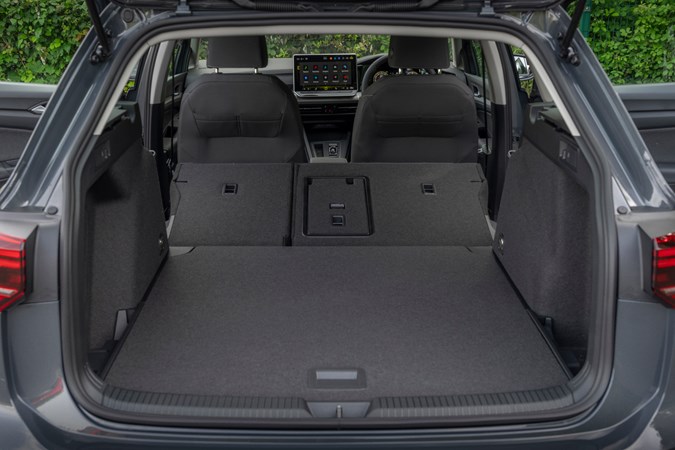
Space in the rear seats is more than enough for adults to sit in the rear with relative ease, with the wide-opening rear doors and generous headroom meaning most will have enough room. There isn’t the same ability to stretch out, however, like you get in the larger Passat, and if you regularly carry adults or taller teenagers in the rear seats, we think the Golf Estate may prove a bit too small inside.
Engines and running costs
The Golf Estate is available with a good choice of petrol and diesel engines, though it’s a shame it’s not available with the same impressive plug-in hybrid setup that you can find in the Golf hatchback, or Passat for that matter.
While diesel has fallen out of favour with many new car buyers, it still accounts for a decent chunk of Golf Estate sales. All diesel models use Volkswagen’s renowned 2.0-litre TDI unit, available with either 115hp or 150hp. The less powerful engine comes with a six-speed manual gearbox and the more powerful is only available with a seven-speed DSG automatic transmission.

If you’d prefer a petrol, it’s now a choice of 1.5-litre petrol engines following the latest update, with the entry-level 1.0-litre being discontinued in the Golf. You can have it with 115hp or 150hp with both available with a six-speed manual gearbox or a seven-speed DSG automatic. Choose the latter and the engine also includes fuel-saving mild-hybrid technology and are marginally quicker, too.
On the subject of fuel economy, regardless of which Golf Estate you choose fuel economy is a big plus. The diesels will only suit those doing plenty of miles or semi-regular longer journeys, with Volkswagen claiming up to 64mpg. That said, even the petrol models can prove efficient, with Volkswagen claiming more than 50mpg. Based on our testing with a mild-hybrid model, it’s more than capable of such a figure.
What’s it like to drive?
The Golf Estate is a car that punches above its weight with the way it drives, with excellent refinement and road manners, yet still mixed with a welcome bit of driver engagement. We’ve tested both a pre-facelift diesel and a revised 150hp mild-hybrid petrol model, and our vote would go for the latter unless you do thousands of motorway miles a year.
The mild-hybrid is by no means fast but has more than enough pace to get the Golf up to speed, with improved refinement over the sometimes-noisy diesel. It has a coasting function that turns the engine off when decelerating to save fuel and the system works well, able to travel for several hundred metres without waking the engine. The brakes are sometimes grabby on the Golf, however, and it’s a problem on other VW Group cars fitted with this engine.
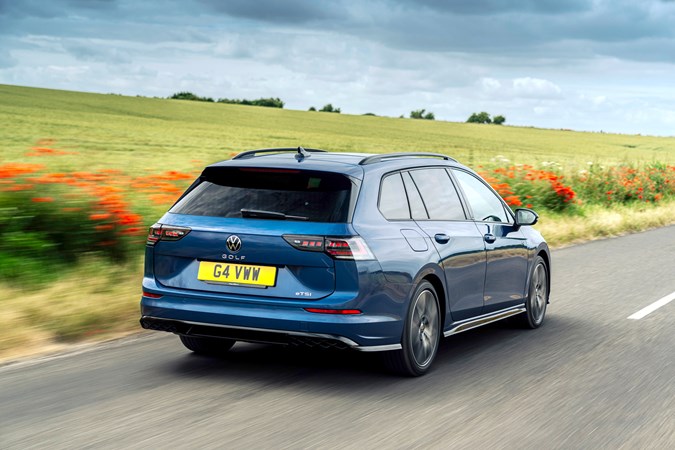
The Golf steers and handles well, with precise steering enabling you to push it down a twistier road – little wonder Volkswagen sells the Golf R Estate for those wanting something sportier and with more power. But while pleasing to drive, the Golf is always predictable and not exactly enjoyable. Choose a Ford Focus Estate if you want more fun, though you’ll have to live with worse refinement and comfortable.
Our test car was in sportier R-Line trim and on the larger 18-inch alloy wheels with low-profile tyres, which based on our experience of the hatchback, can be a touch firm. The test car did, however, come with Volkswagen’s optional adaptive chassis control (called DCC), which lets you harden or soften the ride through adaptive dampers. It’s an impressive feature and we think it’s well worth the extra £730 spend if you’re choosing a Golf on the biggest alloys.
What models and trims are available?
Ignoring the flagship Golf R, the Golf Estate is available in three trim levels – Life, Style and R-Line.
Standard equipment across the Golf line-up is good, with Life models coming with LED lights, 12.9-inch touchscreen, ambient lighting and adaptive cruise control. Mid-spec Style models add 17-inch alloy wheels, three-zone climate control and a reversing camera. At the top of the range, the R-Line focuses on style with its diamond-cut 18-inch alloys, sportier bodysuit, sports sports and sports suspension.
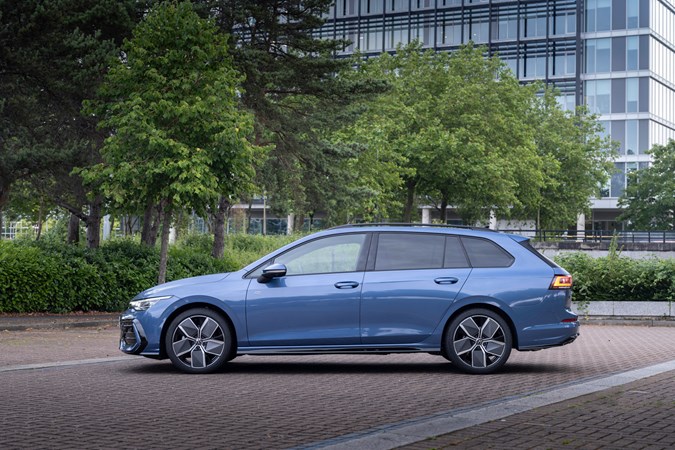
Golf Estate prices are significantly more than the equivalent hatchback. While that’s not much extra considering how much larger the Estate it is, it can look expensive compared to rivals. A SEAT Leon Estate is usefully cheaper to buy outright, with the roomier Skoda Octavia Estate somewhere in the middle and comes with more standard features, including heated front seats, which are an option even on the range-topping Golf R-Line.
Be aware of other expensive options, too. Matrix LED headlights and leather upholstery and heated seats will cost you dearly in terms of outright cash or monthly payments, and you may not see the financial benefit when you come to sell, trade in or hand back the car.
So would we recommend a Golf Estate? Read onto the next page to find out.







